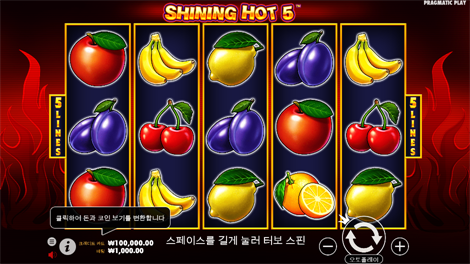프라그마틷 (Pragmatic Play)
iGaming 산업의 선두 콘텐츠 제공자로 자리매김한 프라그마틱 게임은 모바일을 중심으로 한 혁신적이고 표준화된 다양한 포트폴리오를 보유하고 있습니다. 고품질 엔터테인먼트에 대한 우리의 열정은 누구보다도 강력하며, 슬롯, 라이브 카지노, 빙고 등의 제품을 통해 모든 고객에게 최상의 경험을 제공하려고 합니다.

다양한 게임을 즐기기 위해 필요한 것은 단 하나의 API 연동뿐입니다: 슬롯, 라이브 카지노, 빙고, 가상 스포츠, 스포츠 베팅 등을 포함합니다.

20여 개의 관할 지역에서 인증된 라이센스를 소유하고 있습니다.

다양한 수상 경럭 콘텐츠 보유

모바일, 데스크톱, 33개 언어와 모든 화폐

라이센싱 (Licensing)

몰타의 모든 게임 활동을 관리하는 독립적인 단일 규제 기관인 MGA가 있습니다,
업계에서는 전반적으로 효율적이고 법적인 프레임워크 및 기업 구조를 확보하고 있습니다.

허가된 당국과 협력하여 영국의 상업적 게임을 허가 및 규제하는 독립적인 위원회로 도박 위원회가 설립되었습니다. 디지털 문화 미디어 스포츠 도박 위원회(DCMS)의 후원 하에, 공공 기관은 허가 받은 자에 대한 요구 사항을 설정하고 이의 준수를 평가합니다.

인증 (Certification)

BMM Testlabs는 1981년 11월 27일에 창립된 독립적인 사설 게임 테스트 실험실로, ISO 17025 IT 및 17020 검사 기관의 인증을 획득했으며, 전세계 400개 이상의 관할 지역에서 인정을 받고 있습니다. 또한, 이 회사는 13개국에 14개의 사무소를 보유하고 있습니다.

Gaming Associates는 독립적이고 국제적으로 공인된 ATF(Acredited Test Facility)입니다. ISO 9001, ISO/IEC 17025 및 PCI QSA 인증을 받은 회사로, 전 세계적으로 당국의 인정을 받고 있습니다.


















![프라그마틱 [다이아몬즈 오브 이집트]](static/picture/Bingo-Thumbnail-Bingo-Blast.png)
![프라그마틱플레이 [엠퍼럴 카이센]](static/picture/Bingo-Thumbnail-Sweet-Bonanza-Bingo.png)
![프라그마틱플레이 [울프 골드]](static/picture/296x176_Diamond-dazzle.png)
![프라그마틱플레이 [빅 배스 스플레쉬]](static/picture/Bingo-Thumbnail-Boombox.png)
![프라그마틱 [팻 팬더]](static/picture/Bingo-Thumbnail-Country-Roads.png)
![프라그마틱플레이 [엔션트 이집트]](static/picture/Bingo-Thumbnail-Release-The-Kraken.png)
![프라그마틱플레이 [스위트 보난자 크리스마스]](static/picture/Bingo-Thumbnail-Rock-N-Swing.png)
![프라그마틱플레이 [그레이트 스틱 업]](static/picture/Bingo-Thumbnail-The-Jackpot-Room.png)
![프라그마틱 [이순신]](static/picture/Bingo-Thumbnail-Snowball-Blast.png)
![프라그마틱 [툰드라 포춘]](static/picture/Bingo-Thumbnail-Zoom-Room.png)






![프라그마틱플레이 [빅 배스 보난자]](static/picture/evolution-gaming-ISO27001-certificate-EN-20231.png)




